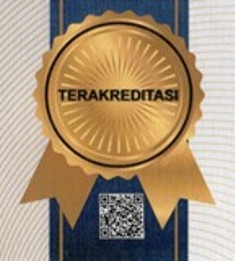Guidelines for Authors
Submission of articles on subjects of relevance to the journal is welcomed at any time. Authors interested in submitting a paper, should send the manuscript using an online submission. The submission should adhere to our guidelines.
All manuscripts should be in English and submitted to sjdgge@ppj.unp.ac.id
Papers are accepted on the understanding that they have not been and will not be published elsewhere. On the decision of the editors, authorities in the relevant field will review the papers blindly. The editors have the final decision on publication. Papers on acceptance become the copyright of UMT Publisher. To assist publication, authors will be requested to submit a copy in Microsoft Word format of their final manuscript via e-journal management System. The journal will be printed in black and white.
PREPARATION OF MANUSCRIPTS
SJDGGE accepts research/original article, short communications & reviews article. All paper should adhere to the scope and policy of SJDGGE and should relate to sustainability.
Manuscripts should be typed (with a wide margin and double spaced, Times New Roman (Font 12) on one side of A4 (30 x 21 cm) paper and usually should not exceed 15 pages in length. In the text, scientific names should be italicised; do not underline any words. Avoid excessive use of italics to emphasize text. In general, manuscripts should be organised in the following order:
Research/Original Article
- Title (should be clear, descriptive and concise)
- Name of authors
- Complete postal address of affiliations
- E-mail address of the corresponding author
- Abstract
- Keywords (indexing terms): 3 – 5 items
- Introduction
- Material studied, area descriptions, methods and techniques
- Results and discussion
- Conclusion
- Acknowledgements (additional information concerning research grants)
- References
Review Article (It does not have method or result section, no study to describe & no data to be analysed)
- Title (should be clear, descriptive and concise)
- Introduction (where the topic or problem is introduced & previous research is described)
- Discussion (main points are discussed)
- Conclusion (article’s strengths & weaknesses)
- Reference
TITLE AND SUBTITLES
Titles and subtitles should not be run within the text. They should be typed on a separate line without indentation. Use bold face, lower-case letter type for titles. Use italics letter type for subtitles.
LENGTH
Including illustrations, tables and references, original contributions should not exceed 15 manuscript pages or 18,000 characters.
UNITS AND ABBREVIATIONS
SI-units should be used wherever possible. If other units and non-standard abbreviations cannot be avoided, they should be defined at first mention.
ABSTRACT
The abstract should be clear, descriptive and not longer than 400 characters. It should provide a very brief introduction to the problem and a statement about the methods used in the study. This should generally be followed by a brief summary of results, including any important numerical data (means and standard errors, for example). The abstract should end with an indication of the significance of the results.
KEYWORDS
Please include relevant keywords in the manuscript. Keywords should not be the same as the word appears in the title.
TABLES
Authors should take notice of the limitations set by the size and layout of the journal. Large tables should be avoided. Reversing columns and rows will often reduce the dimension of a table. Tables should be placed and typewritten in the text. Each table should have a brief self-explanatory title & numbered accordingly. Column headings should be brief, but sufficiently explanatory. Standard abbreviations of units of measurement should be added between parentheses. Any explanation essential to the understanding of the table should be given as a footnote at the bottom of the table.
FIGURES
Figures should be saved in a neutral data format such as TIFF or ESP and a printout should always be included. All figures should be placed and typewritten in the text. Figures should be numbered consecutively according to their sequence in the text. Reference should be made in the text to each figure. Lettering should be clear and large enough to allow a reduction of 50% without becoming illegible. The lettering should be in English. Each figure should have a caption. The captions to all illustrations should be typed on a separate sheet of the manuscript. Explanation should be given in the typewritten legend. Drawn text in the illustrations should be kept to a minimum. Photographs are only acceptable if they have good contrast and intensity. Sharp and glossy copies are required. Reproductions of printed photographs cannot be accepted.
REFERENCES
SJDGGE uses APA system. All publications cited in the text should be presented in a list of references following the text of the manuscript. The manuscript should be carefully checked to ensure that the spelling of author’s names and the dates of publication are exactly the same in the text as in the reference list. If reference is made in the text to a publication written by more than two authors the name of the first author should be used followed by “et al.,”. References cited together in the text should be arranged chronologically. The list of references should not exceed 25 for regular article and should be arranged alphabetically by authors’ names, and chronologically per author. Papers accepted for publication but not yet published should be cited as “in press”. References concerning unpublished data and ‘personal communications’ should not be cited in the reference list but may be mentioned in the text. Use the following system for arranging your references:
■ For periodicals:
Dedi, R., & Yudi, S. (1993). Oyster reefs and nutrient retention tidal creeks. J. Exp. Mar. Biol. Ecol. 171:251-258.
■ For books:
Erna, J. H. (1999). Biostatistical analysis, 4th ed. Prentice-Hall, Englewood Cliffs, NJ. 718 pp.
■ For multi-author books:
Momon, M. H., Yudi, D. P., Iswandi, C. R., Berry, A., Harlow, T., & Bach, J. S. (1993). There's more to self-esteem than whether it is high or low: The importance of stability of self-esteem. Journal of Personality and Social Psychology. 65: 1190-1204
■ From online source:
Syafri, I. A. (2001). How to be an entrepreneur. Journal of Business, 8. Retrieved from http://www.business.com/money/how.html
Erianjono, I. A. (2001). Toward effective poster presentations: An annotated bibliography. Journal of Business. 41(11/12): 1245-1283. doi:10.1108/03090560710821161
SPECIAL ISSUES
Special issues are papers from symposiums/conferences. 10-20 selected papers can be accommodated in one issue. Papers should not exceed 8-10 printed pages, or 5,000 words.
Procedure for Special Issues in SJDGGE is as follows:
- The Guest Editor from the Seminar/Symposium is the Chair of the Scientific Committee of the Seminar/Symposium. The Guest Editor and the Guest Editorial Board are responsible for collecting the papers (should adhere to SJDGGE format). The Board shall also be responsible in identifying 2 reviewers for each paper, and in completing the blind peer-review process.
- When the reviews are received, the Editorial Members of SJDGGE are responsible for the final approval of the papers for publication in the special issue.
ALTERATION IN PROOF
Authors will receive an email message from the Editor of Sumatra Journal of Disaster, Geography and Geography Education providing directions for checking of galley proofs. Authors should return any corrections to the galleys to the Editor as soon as possible. A limited number of alterations in proof are unavoidable, but the cost of making extensive corrections and changes after an article has been composed will be charged to the author. Final responsibility for correcting errors lies with the author. Article is freely available in SJDGGE website.












